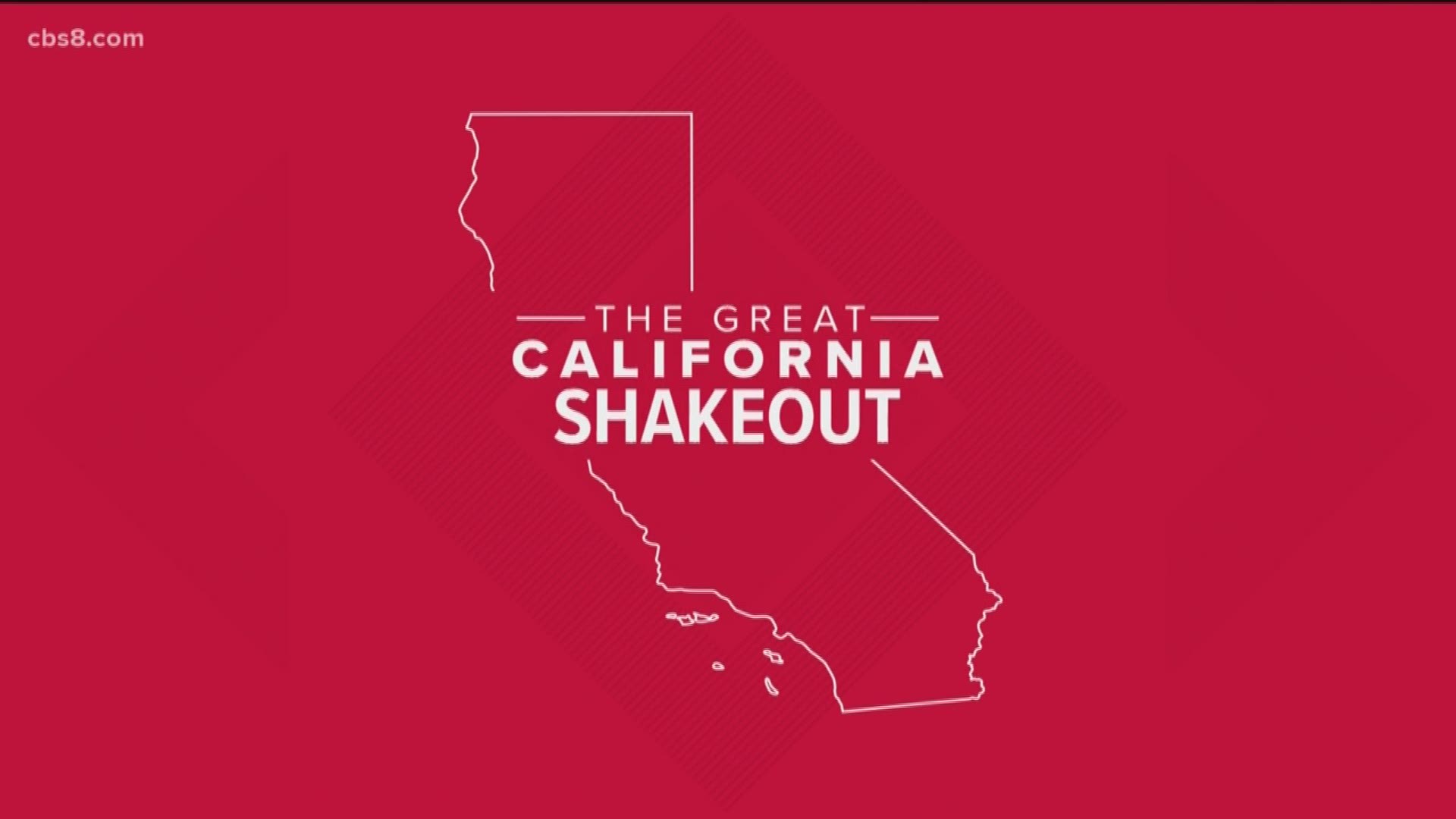LOS ANGELES — Earthquake early warning alerts will become publicly available throughout California for the first time this week, potentially giving people time to protect themselves from harm, the Governor's Office of Emergency Services said Wednesday.
The nation's first statewide quake warning system was launched Thursday, coinciding with the 30th anniversary of the Loma Prieta earthquake that ravaged the San Francisco Bay area on Oct. 17, 1989, as well as the annual Great Shakeout safety drill.
Warnings produced by the ShakeAlert system will be pushed through two delivery systems: a cellphone app called MyShake and the same wireless notification system that issues Amber Alerts, meaning people may receive both notifications.
"This app is at a place now where we're satisfied with the performance and the testing, which has been very well done, (so) that we think we're at a place where it's not perfect but we can keep people safe, and that's our ultimate threshold," said Brian Ferguson, deputy director for crisis communication and public affairs at the Office of Emergency Services.
The state earthquake app, developed at the University of California, Berkeley, is available for download to IOS users through iTunes and through GooglePlay stores for Android phones.
"The alerts will only go to people that are going to feel shaking," said Richard Allen, director of the UC Berkeley Seismological Laboratory.
The thresholds for an alert are an earthquake of magnitude 4.5 and shaking intensity level 3.
"Intensity 1 is you don't feel it; intensity 2 is some people may feel it; intensity 3 is many people do feel it," Allen said.
The ShakeAlert system is being developed by the U.S. Geological Survey and partners for the West Coast states. It is most complete in California.
The system does not predict earthquakes. Rather, it uses numerous seismic stations to detect the start of an earthquake and light-speed communications to send the data to computers that instantly calculate location, magnitude, intensity of shaking and create alerts to be distributed to areas that will be affected.
Depending on distance from the epicenter, the alerts may give warnings of several seconds to a minute before shaking arrives at a given location — enough time to duck under desks, pull a knife away from a surgical patient or shut down elevators, trains and industrial processes.
After lengthy testing, alerts were made broadly available to businesses, utilities, schools and other entities last year. The only large-scale public notification is in Los Angeles County, where an alerting app developed for the city of Los Angeles hasn't been triggered yet.
The MyShake system maintains a database of which cellphones are in 10-kilometer-by-10-kilometer (6.2-mile-by-6.2-mile) cell grids and pushes the alerts to phones in zones where at least level 3 shaking will occur, so receiving an alert is not based on which tower the phone is communicating with, Allen said.
The Wireless Emergency Alerts system, known as WEA, operates slightly differently.
WEA creates polygons that include cellphone towers, said Ryan Arba chief of the seismic hazards branch of the Office of Emergency Services.
"If your phone is currently communicating with that cell tower, the message will be broadcast to your phone," he said.
A person will get an alert if they are outside a polygon but their phone is communicating with a tower inside the polygon, he said.
Arba said none of the alerting systems are perfect, and it may also be possible that people feel quakes without receiving alerts.
"When live alerts go out, we'll know how the system performs from the alert distribution side, which is something we have no visibility into now," he said.
The developers expect to improve the system through experience.
Most recently, the MyShake system was tested this week by a magnitude 4.5 quake in the San Francisco Bay Area and a 4.7 in central California. The median times from detection to alerts hitting phones was 2.1 seconds and 1.6 seconds, respectively, Allen said.
"An important caveat here is this is measuring delivery of alerts to a relatively small number of phones, not to the millions of phones that we will want to do in a big earthquake with many more people having the app. But this is encouraging," Allen said.
The Los Angeles app was criticized because it did not alert users when two powerful earthquakes struck an area of the Mojave Desert more than 100 miles north of the city on July 4 and 5.
Experts said the goal was to alert people who might experience potentially damaging shaking rather than simply feel some shaking. But the city later announced the threshold will be lowered to alert of "weak" shaking.
The MyShake announcement came on California's annual Great Shakeout Day, when people are told to drop, cover and hold on when they feel an earthquake. It's also important to get your home ready before the big one hits.
Disaster kits like those sold by Ready America in Vista can help you survive an earthquake and a resulting power outage.
“The water that we put into our kits has a five year shelf life or even a ten year shelf life,” said Jeff Primes, president of Ready America, who also showed off a food bar that has a five year shelf life.
First aid kits and flashlights also are important to keep on hand. Ready America sells one flashlight with a hand crank that provides not only light, but also an emergency radio and cell phone charger all in one unit.
Inside the home, you should strap down televisions and other items to keep them from falling and causing injuries during a quake.
“The home is not likely to collapse on you. It's all those treasures that we have that are sitting on the shelves that we don't want to become projectiles in the earthquake. So, something like quake hold putty, or quake hold museum gel or wax, are ways to secure things to the shelf,” said Primes

